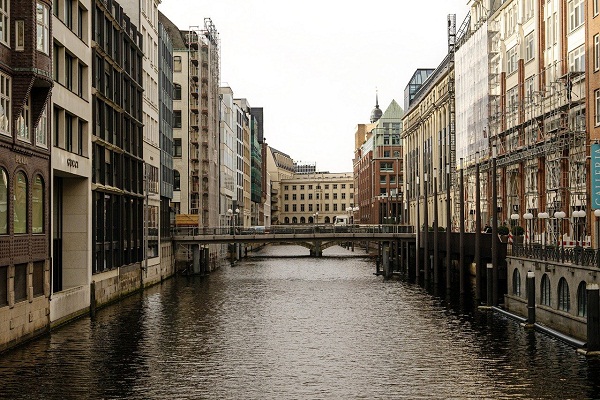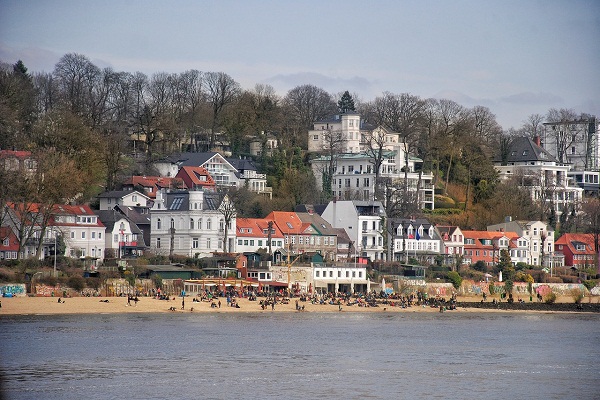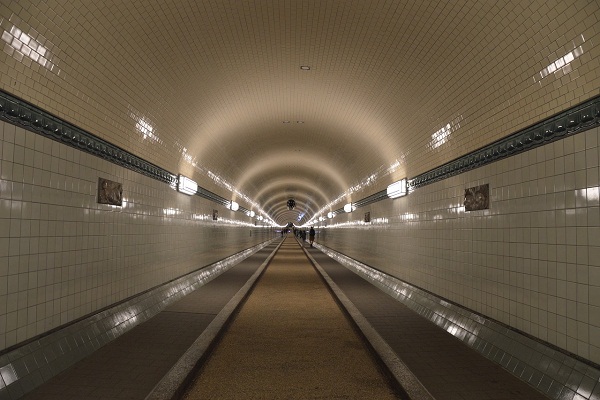Best Time to Visit Hamburg
Post Highlights
- 1 Introduction to Hamburg
- 2 Why Visit Hamburg?
- 3 Top Attractions and Places to Visit in Hamburg
- 4 Hidden Gems of Hamburg
- 5 Nearby Attractions of Hamburg and Day Trips
- 6 Itinerary Suggestions for Hamburg
- 7 Best Time to Visit Hamburg
- 8 Accommodation Options in Hamburg
- 9 Food and Drink in Hamburg
- 10 How to Get to Hamburg
- 11 Getting Around Hamburg
- 12 Travel Tips and Safety
- 13 Cultural Insights
- 14 Budget and Expenses for Hamburg
- 15 Personal Experience and Stories
- 16 Photography and Visuals
- 17 FAQs or Common Questions
Introduction to Hamburg
Welcome to Hamburg, Germany’s second-largest city and one of Europe’s most important port hubs. Known as the “Gateway to the World,” Hamburg is a vibrant, cosmopolitan metropolis that blends historical charm with modern innovation. From its maritime legacy to stunning architectural landmarks, Hamburg is a city where culture, commerce, and lifestyle converge.
Why Visit Hamburg?
Hamburg is a city rich in history and cultural diversity. Its iconic harbor, world-class museums, and vibrant nightlife make it a destination for all types of travelers. Whether you’re exploring the charming old warehouses of Speicherstadt, strolling along the Elbe River, or enjoying a boat tour of the harbor, Hamburg offers a unique mix of urban sophistication and maritime tradition.
Best Time to Visit Munich 2024
Top Attractions and Places to Visit in Hamburg
• Elbphilharmonie

One of the most iconic buildings in Germany, the Elbphilharmonie is a masterpiece of modern architecture, with its striking glass façade resembling waves. Located on the banks of the Elbe River, this concert hall has become a symbol of Hamburg’s cultural vibrancy. Inside, it boasts one of the most acoustically advanced concert halls in the world, drawing musicians and performers from across the globe. Visitors can take a guided tour or simply enjoy panoramic views of the city and harbor from its free public viewing platform, the Plaza.
Best Time to Visit Berlin 2024
• Miniatur Wunderland

A must-visit for both children and adults, Miniatur Wunderland is the world’s largest model railway exhibition and much more. Spanning different countries and cities, the intricately detailed models include miniature versions of the Alps, Las Vegas, Scandinavia, and even Hamburg’s own airport. The level of craftsmanship is astounding, with over 1,000 trains running through meticulously constructed landscapes, complete with tiny people, animals, and vehicles. The day-to-night lighting changes make it even more magical, as the miniature world comes to life under twinkling lights.
Best Time to Visit Mallorca 2024
• Speicherstadt

A UNESCO World Heritage site, Speicherstadt is the largest warehouse district in the world, and its red-brick Gothic architecture is truly captivating. Built in the late 19th century, it served as a bustling center of trade, housing goods like coffee, spices, and carpets. Today, many of the warehouses have been converted into museums and galleries, including the International Maritime Museum and the Speicherstadtmuseum, where visitors can learn about the history of this vital trading hub. Walking through its narrow canals and bridges, especially during the evening when the buildings are beautifully lit, is an unforgettable experience.
Best Time to Visit Granada Spain 2024
• Hamburg Rathaus (City Hall)

This imposing neo-Renaissance building is not only the seat of Hamburg’s government but also an architectural gem. The Hamburg Rathaus, completed in 1897, stands proudly in the heart of the city, with its grand façade, intricate statues, and over 640 rooms. Visitors can take guided tours to explore the opulent interiors, including the grand halls, chandeliers, and artworks that depict the city’s rich history. The square in front of the Rathaus is also a popular spot, often bustling with events, markets, and festivals.
• Planten un Blomen Park
Hamburg’s green oasis, Planten un Blomen is a sprawling park that offers tranquility amidst the urban hustle. Famous for its lush botanical gardens, this park features beautifully landscaped areas, including a Japanese Garden, rose gardens, and tropical greenhouses. During the summer, the park hosts daily water-light concerts, where fountains dance in sync to classical music. Whether you’re looking for a peaceful place to relax or a scenic backdrop for a leisurely stroll, this park offers a natural escape in the heart of Hamburg.
• Hamburg Harbor (Port of Hamburg)

The Hamburg Harbor, known as Germany’s “Gateway to the World,” is one of the largest ports in the world. A boat tour through the harbor offers a fascinating perspective on Hamburg’s maritime history, as you pass by colossal container ships, shipyards, and historic sailing vessels. The waterfront area, known as Landungsbrücken, is bustling with activity and home to various restaurants and shops. Another highlight is the HafenCity district, which blends contemporary architecture with historic elements, reflecting Hamburg’s evolution as a major global port.
Hidden Gems of Hamburg
• Blankenese

Nestled along the banks of the Elbe River, Blankenese is a charming suburb of Hamburg known for its stunning views and relaxed atmosphere. Once a fishing village, this area is now an upscale residential neighborhood with winding streets, elegant villas, and lush greenery. The Treppenviertel, or “Stair Quarter,” is a maze of narrow, steep stairways leading down to the river, offering breathtaking views along the way. Blankenese is perfect for a relaxing day trip, especially if you enjoy scenic walks or a leisurely coffee by the water.
Best Time to Visit Seville Spain 2024
• Treppenviertel
The Treppenviertel is the heart of Blankenese, characterized by its narrow stairways and charming alleys. As you meander through this area, you’ll pass by quaint cottages, lush gardens, and scenic lookouts offering stunning views of the Elbe River. The steep climbs may be challenging, but they’re worth it for the tranquility and beauty of the surroundings. The unique layout and picturesque setting make this area feel more like a Mediterranean hillside village than part of a bustling German city.
• Jenisch Park
For those seeking a peaceful escape, Jenisch Park is one of Hamburg’s hidden treasures. This sprawling park offers a serene landscape of rolling meadows, wooded areas, and walking paths, with picturesque views of the Elbe River. The park is also home to the Jenisch House, an elegant 19th-century mansion that now serves as a museum showcasing fine arts and cultural history. It’s a perfect spot for a quiet picnic, leisurely stroll, or an afternoon immersed in art and history.
• Elbtunnel

Opened in 1911, the Old Elbtunnel is a historic engineering marvel that runs beneath the Elbe River, connecting the city to the southern port areas. Originally built to transport workers to and from the docks, the tunnel is now a popular attraction for pedestrians and cyclists. Walking through the tiled, art-nouveau interior feels like stepping back in time, and once you reach the other side, you’ll be rewarded with fantastic views of Hamburg’s skyline and harbor.
Nearby Attractions of Hamburg and Day Trips
• Lüneburg (50 km)

Just a short train ride from Hamburg, Lüneburg is a medieval town steeped in history. Known for its salt mines, which made it one of the richest cities in the region during the Middle Ages, Lüneburg boasts beautifully preserved buildings, cobblestone streets, and a lively old town. Don’t miss the Lüneburg Salt Museum or the opportunity to wander through the picturesque Stintmarkt, an area along the river lined with colorful houses and lively cafés.
• Lübeck (65 km)

A UNESCO World Heritage site, Lübeck is famous for its medieval architecture and maritime history. The city’s stunning brick Gothic buildings, such as the Holstentor Gate and St. Mary’s Church, transport visitors back to the days when Lübeck was a powerful member of the Hanseatic League. Lübeck is also known for its marzipan, and a visit to the Niederegger Café for a marzipan tasting is a must. Its charming old town, with winding alleyways and ancient churches, makes for a perfect day trip.
Best Time to Visit Dubai 2024
• Stade (50 km)

A little-known gem, Stade is a charming town along the Elbe River, with a rich history dating back over 1,000 years. Stade’s old town is a delight to explore, with half-timbered houses, narrow streets, and beautiful canals. The town is quieter than its larger neighbors, making it a peaceful escape, but still offers fascinating history and architecture, such as the Church of St. Cosmae and the Schwedenspeicher Museum, which details Stade’s maritime and Viking history.
• Wadden Sea National Park (90 km)
For nature lovers, a trip to Wadden Sea National Park is a unique experience. A UNESCO World Heritage site, this coastal area is home to the largest tidal flats system in the world. The park offers guided mudflat hiking tours, where you can explore the seabed during low tide and spot a variety of wildlife, including seals and migratory birds. The Wadden Sea is an important ecological zone and offers visitors an unforgettable opportunity to experience one of Europe’s most unique natural landscapes.
Itinerary Suggestions for Hamburg
- Day 1: Explore the Heart of Hamburg
Begin your Hamburg adventure in the city center. Start your day with a visit to Hamburg Rathaus (City Hall), an architectural gem with a stunning interior. Take a guided tour to delve deeper into the building’s rich history. Afterward, enjoy a leisurely stroll through the surrounding area of Jungfernstieg, where you’ll find high-end shopping and a beautiful promenade along the Alster Lake. From there, head to Speicherstadt, the historic warehouse district and a UNESCO World Heritage site. Wander through its cobblestone streets and narrow canals, visiting museums such as the Speicherstadtmuseum or the International Maritime Museum. End your day by taking in the evening lights of Speicherstadt, where the old warehouses are illuminated, creating a magical atmosphere.
- Day 2: Culture and the Harbor
Spend your second day diving into Hamburg’s rich cultural offerings. Start your morning at Miniatur Wunderland, where you can easily spend hours marveling at the world’s largest model railway exhibition, with its tiny replicas of famous cities and landmarks. Afterward, make your way to the Elbphilharmonie, Hamburg’s iconic concert hall. Take the escalator up to the Plaza for panoramic views of the city and harbor, or if you plan ahead, attend a concert in one of the venue’s acoustically perfect halls. In the afternoon, embark on a harbor tour. From Landungsbrücken, take a boat tour around the port, past the giant container ships and historic sailing vessels. It’s a fantastic way to see Hamburg’s industrial and maritime prowess in action.
- Day 3: Day Trip to Lüneburg or Lübeck
Dedicate your third day to exploring the charming towns near Hamburg. A quick train ride will take you to Lüneburg, a medieval town known for its historic salt trade and charming old town. Stroll through the narrow streets, visit the Lüneburg Salt Museum, and take in the views from John’s Church. Alternatively, you can head to Lübeck, a UNESCO World Heritage site famed for its medieval architecture and marzipan. Explore Lübeck’s ancient Holstentor Gate, visit St. Mary’s Church, and don’t miss out on the marzipan treats at Niederegger Café. Both towns offer a delightful mix of history, culture, and picturesque surroundings.
- Day 4: Nature and Relaxation
On your final day, take a step back from the urban hustle and embrace the natural beauty Hamburg has to offer. Spend a few hours in Planten un Blomen Park, where you can stroll through lush botanical gardens, visit the Japanese Garden, and, if you’re lucky, catch one of the water-light concerts during the summer months. In the afternoon, head to Blankenese, one of Hamburg’s most scenic and tranquil suburbs. Walk through the Treppenviertel, a maze of steep stairways and narrow streets that lead to breathtaking views of the Elbe River. For an even more relaxing experience, grab a coffee by the waterfront and enjoy the picturesque views as ships sail by.
Best Time to Visit Hamburg
- The ideal time to visit Hamburg is from May to September, when the weather is at its most pleasant for sightseeing and outdoor activities. During these months, temperatures are mild, often ranging from 60°F to 75°F (15°C to 24°C), making it perfect for exploring the city’s parks, harbor, and outdoor attractions. Summer in Hamburg is particularly vibrant, with numerous festivals, open-air concerts, and events happening throughout the season, such as the Alstervergnügen and the Hafengeburtstag (Hamburg Harbor Birthday), one of the city’s largest celebrations.
- If you’re a fan of holiday festivities, December is also a magical time to visit Hamburg. The city transforms into a Christmas wonderland, with several Christmas markets popping up in different neighborhoods. The largest one, located near the Rathaus, offers a festive atmosphere with traditional German crafts, food, and glühwein (mulled wine). Despite the colder weather, the twinkling lights, festive cheer, and delicious seasonal treats make winter in Hamburg a unique and charming experience.
Accommodation Options in Hamburg
- Luxury: The Fontenay, Fairmont Hotel Vier Jahreszeiten
- Mid-range: 25hours Hotel HafenCity, NH Collection Hamburg City
- Budget: Generator Hamburg, Superbude Hotel & Hostel
Food and Drink in Hamburg
Hamburg’s culinary scene is a delightful blend of traditional and modern cuisine. Don’t miss:
- Fischbrötchen: A fish sandwich typically found near the harbor.
- Labskaus: A traditional seafarer’s dish made from corned beef, potatoes, and beetroot.
- Rote Grütze: A sweet berry dessert. Pair your meal with Astra beer or enjoy a local coffee at one of the cozy cafés.
How to Get to Hamburg
Hamburg is well connected by air, rail, and road. The Hamburg Airport (HAM) has regular international flights. Alternatively, Germany’s extensive rail system (Deutsche Bahn) makes it easy to reach Hamburg from major European cities.
Getting Around Hamburg
Hamburg’s public transportation is efficient and user-friendly. The U-Bahn and S-Bahn networks cover most tourist areas, while buses and ferries provide additional transit options. Day passes for public transport are affordable and convenient for visitors.
Travel Tips and Safety
- Safety: Hamburg is generally safe, but like any big city, keep an eye on your belongings in crowded areas.
- Weather: The weather can be unpredictable, so pack layers and a rain jacket.
- Language: While German is the official language, many locals speak English, especially in tourist areas.
Cultural Insights
Hamburg is known for its liberal and open-minded attitude. It has a strong tradition of maritime trade and a rich cultural scene. The Reeperbahn, located in the St. Pauli district, is the city’s famous nightlife and entertainment hub. Be respectful of the city’s history and its local customs, and don’t miss out on experiencing Hamburg’s thriving music and theater scene.
Budget and Expenses for Hamburg
- Accommodation: €50–€200 per night depending on the type.
- Food: Budget meals around €10–€15, while a nice dinner may cost €30–€50.
- Attractions: Entry to most museums and attractions costs between €10–€20.
- Transportation: Day passes for public transportation cost around €6–€7.
Personal Experience and Stories
During my time in Hamburg, what struck me the most was the blend of old and new. Walking through the historical Speicherstadt felt like stepping back in time, while the Elbphilharmonie’s futuristic architecture reminded me of the city’s modern ambitions. One evening, I took a harbor tour and watched the sunset behind the skyline, reflecting on how Hamburg’s maritime history continues to shape its identity today.
Photography and Visuals
Hamburg is a photographer’s dream. Whether it’s the sleek lines of the Elbphilharmonie, the serene beauty of Planten un Blomen, or the bustling activity in the harbor, there are endless opportunities for great shots. Don’t forget to capture the intricate details of the Rathaus and the atmospheric canals of Speicherstadt.
FAQs or Common Questions
- What is Hamburg known for? Hamburg is famous for its harbor, historic warehouses, and cultural landmarks like the Elbphilharmonie.
- How many days should I spend in Hamburg? Three to four days is ideal to explore the city and take day trips.
- Is Hamburg a walkable city? Yes, Hamburg’s city center is compact and walkable, with most attractions easily accessible on foot.
Hamburg is a city that offers something for every type of traveler. Whether you’re there for history, culture, or just to soak in the city’s unique atmosphere, Hamburg will leave you with unforgettable memories.



